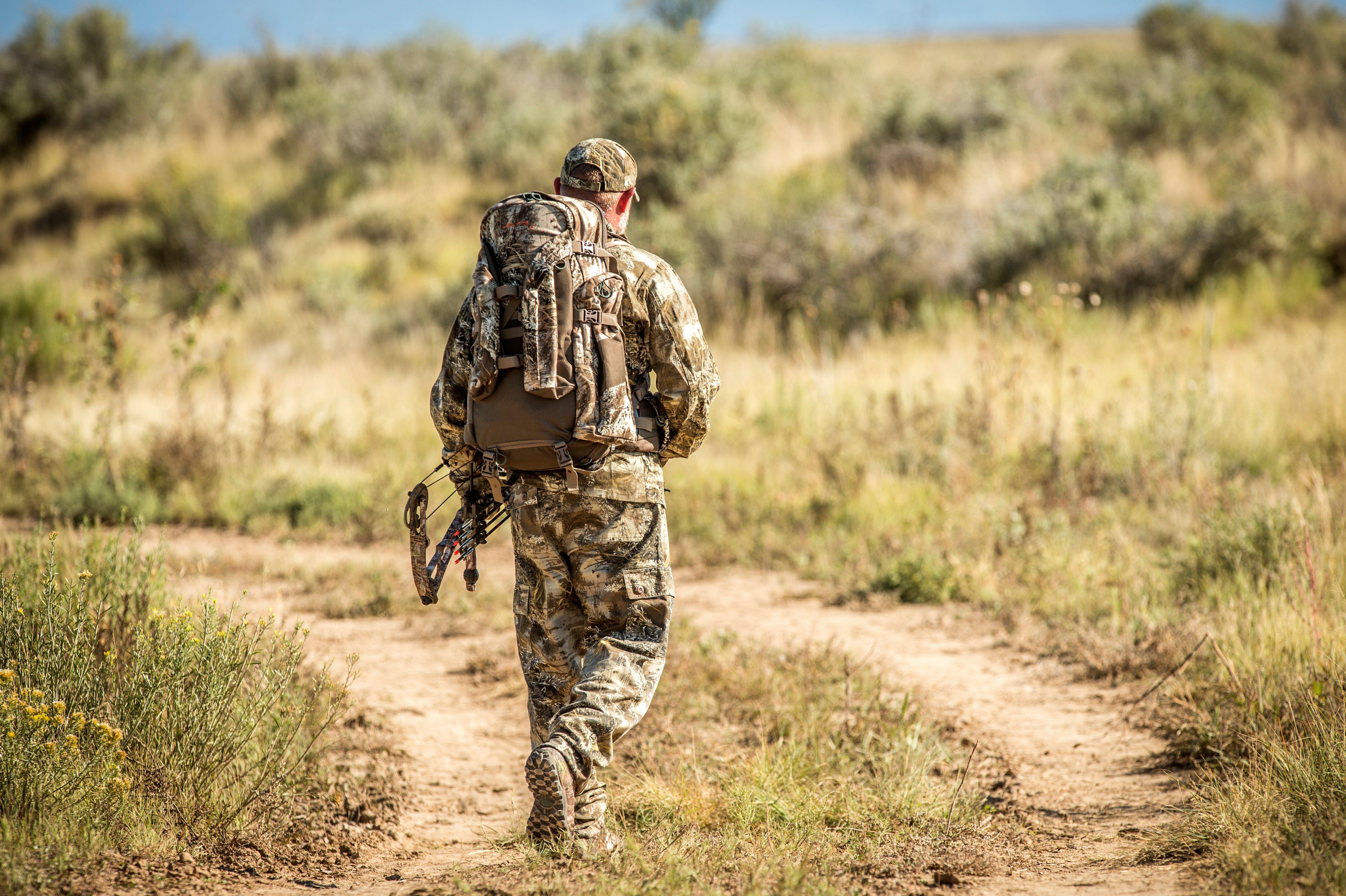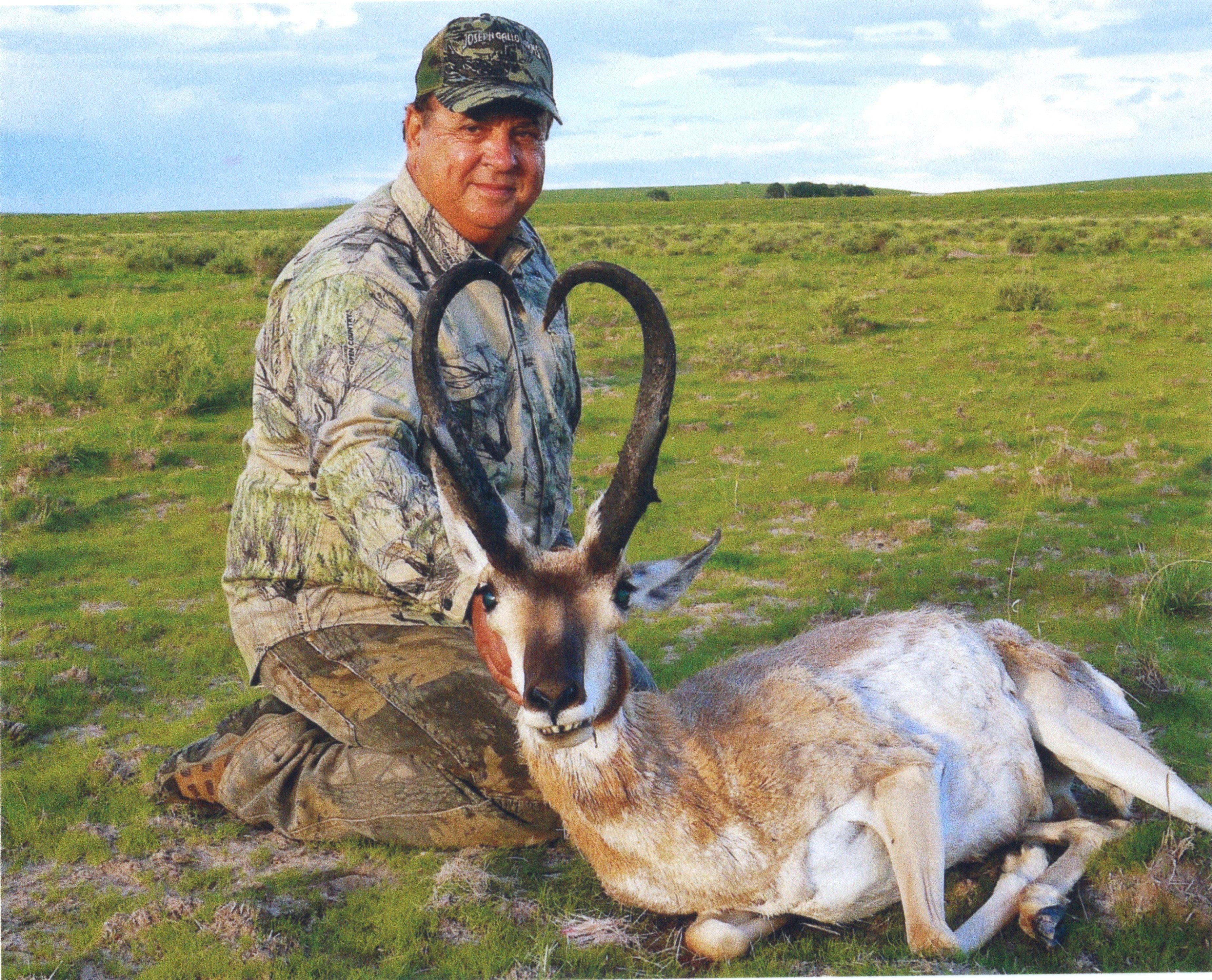A deep dive into the Boone and Crockett records reveals fascinating statistics on record-class goats

Pronghorns are difficult to field-judge. Only a few inches separate a nice buck from a real trophy. Image by John Hafner
Many hunters overlook antelope in favor of their larger and (presumed) sexier western cousins. I would argue that the general population doesn’t know that antelope actually aren’t antelope. “Pronghorn” is their official name, and believe it or not, they are more closely related to giraffes than African antelope. Truly, no other animal in North America is closely related to them on the family tree. They are a species that stands alone.
Giant pronghorn bucks don’t carry the same characteristics as branch-antlered game animals. Huge elk and bully deer mesmerize us with their salacious baskets of points – long and even gaudy at times. In the case of elk, the difference between an average 5-point bull and a world record can be hundreds of inches – over 10 feet of added length over another good bull! The difference between average antelope and their biggest brothers is accentuated from one drool-worthy quality: mass.
Sure, record book goats look longer and taller than the average buck, but compared to elk – and even deer – the difference is lessened. In fact, novice hunters often find it difficult to field judge a pronghorn on the hoof. If you’re ever lucky enough to lay eyes on a real thumper, you may have trouble accurately scoring it, but there’s little doubt that you’ll wonder just how a sleek and slender animal can hold up that much headgear. I promise you. You’ll know a giant when you see one.
The Boone Crockett Club holds court and keeps record over all of North America’s largest trophy harvests, including pronghorn. Founded in 1887 by Teddy Roosevelt, B&C is headquartered in Missoula, Montana and is the “go-to” resource for blue ribbon game animals. We dug deep into their record books to mine their treasure trove of data, and boy, did we find out some good information.
All data compiled from Boone & Crockett Big Game Records Live is available HERE.

Mike Gallo’s world-record pronghorn. Image courtesy of Boone and Crockett
CHAMPION GOATS
Any antelope that makes the official record books is a stud. To be included, entrants must score 80 inches after 60 days of drying at room temperature. Several measurements are taken, including length of horns, inside spread, and length of prongs. Four circumference measurements are also taken to compile the total score. At any right, 80 inches is a dandy, but Mike Gallo’s 2013 buck stands alone at the top.
Prior to Gallo’s silver bullet in 2013, the previous gold medalist was killed by Dylan Woods in 2000 and again tied by David Meyer in 2002, both in Arizona and both scoring an even 90 inches. Before those two monster hits in a three-year span, Michael O’Haco held the honors for 15 years after tagging a 93 4/8-inch* behemoth in Arizona in 1985.
*Before any 3rd grade teachers fuss about not properly simplifying fractions, Boone & Crockett scores on a 1/8th inch scale.
Aside from its 96 4/8-inch official score, what makes Gallo’s buck even more impressive is that at the time of its harvesting, it was a full inch-and a half bigger than Woods and Meyer, who were tied for second place at the time. In 2013, that inch and a half was the largest difference between any two bucks in the entirety of the book. Not only did Gallo best the previous record, he shattered it. In 2014, only one year after Gallo’s record kill, Dale Hislop found a buck that was 95 4/8, notching a new, standalone 2nd place spot. While he split the distance between Woods, Meyer, and Gallo, his silver-medal buck is still a full inch behind Gallo, a huge gap Gallo still maintains into present day.
Aside from the difference in size, another unique factor of Gallo’s buck was that unlike the buck in second and the two tied for third, his buck was killed in New Mexico. Socorro County, where he found his trophy, is one of the most productive counties in the entire state.
Don’t Miss: TICK-BORNE MEAT ALLERGY IS ON THE RISE

Work hard, and you’ll end with a rewarding hunt, regardless of filled tags. Image by Bill Konway
WHERE GIANT ANTELOPE PLAY
Wyoming is the epicenter of antelope hunting. In fact, there are more antelope in Wyoming than the rest of North America combined. According to the Wyoming Game and Fish Department’s 2022 harvest report, over 28,000 antelope were killed in Wyoming, which is more than double the total estimated population for the entirety of Arizona.
Because of that, it should come as no surprise that Wyoming has hosted the largest share of the 4,304 record book entries, with 32% of the biggest bucks in America having come from the Cowboy State. Carbon County, WY alone has entered 408 bucks into the record book, which is almost 10% of the entire record book harvest coming from one single county! In fact, Carbon Co. has produced more giant bucks than the entire states of Montana, South Dakota, North Dakota, Idaho, and Kansas combined. Wyoming Game and Fish intentionally manages this area for trophies. With its sprawling public land and dense pronghorn populations, Carbon Co. and the surrounding counties of Sweetwater, Fremont, and Natrona are an antelope hunter’s dream destination.
While southern Wyoming is unequivocally the best antelope hunting on Planet Earth, drawing a tag there will cost you. As of 2023, hunting in the top units in Carbon Co. took 15 regular points and 13 special points to draw a tag. With point creep hitting these units the hardest, expect the number to only grow. For hunters not wanting to wait 15+ years to hunt this Pronghorn Shangri-La, deeper pockets can significantly reduce the waiting period.
While Wyoming dominates the overall list, the numbers start looking a little different when condensing that list to only the largest bucks. When filtering to only the top 500 entries, New Mexico ranks above Wyoming in number of contributions. Mora County and Socorro County where Mike Gallo shot his top-ranked buck are the most productive. Arizona then rounds out 3rd place with Coconino County and Yavapai County seeing the most success.
When the top of the book is reduced to only the top 100 entries, Arizona takes the cake, booking 31 entries compared to New Mexico’s 25 and Wyoming’s 22. Wyoming is undoubtedly the land of opportunity, but while you might not see as many animals in Arizona or New Mexico, the ones you do see are more likely to be noteworthy.
For out-of-state hunters, “The Land of Enchantment” offers one distinctive advantage over the other two states. Unlike Wyoming and Arizona, New Mexico awards tags to outfitters who can then sell them to clients. In both Wyoming and Arizona, hunters with Boone & Crockett aspirations must wait several years to draw premium a tag and then hire a guide afterward. In New Mexico, a hunter can buy trophy tags from an outfitter without needing to wait any time for preference or bonus points to build. These premium tags can commonly sell for thousands of dollars, but they can significantly reduce the wait-time to having a legitimate opportunity at a giant pronghorn buck. If a hunter wanted to do it – and wanted to pay for it – he or she could hunt trophy-class bucks as much as they want in New Mexico.
Don’t Miss: HUNTER SHOOTS MONSTER BUCK AFTER HIS TRUCK BURNS DOWN

Gallo’s buck scored an amazing 96 4/8. Image courtesy of Boone and Crockett
FASCINATING FACTS
Performing intensive data analysis on the Boone & Crockett record books is sure to turn over some interesting stones. Below is a collection of random – but interesting – information.
Wyoming, New Mexico, and Arizona get all the love, but 17 different states and provinces have recorded record book kills. The vast deserts of Nevada have produced the 4th most entries. One hundred and four “booner” bucks have been harvested in Canada. Two entries have even been recorded in Chihuahua, Mexico. Additionally, Texas has recorded more entries than North Dakota, South Dakota, and Idaho combined.
Several bucks have been killed and submitted without a claimed location. Several others have been killed and submitted without a known hunter. Among those hunters that are known, Len Guldman has killed 29 bucks that have made the record books. His most impressive stretch (there are many when you shoot 29) was during the 1990s and early 2000s when he harvested a B&C buck for 12 out of 13 years. Most hunters never lay hands on a record book buck, and Guldman did it for 12 out of 13 years in a row. Ten other hunters have 10+ antelope in the official book, and several women have multiple entries. There certainly is a high class of individuals who stand out from the crowds.
Of all the impressive feats that have been highlighted from analyzing the Boone & Crockett pronghorn records, one stands out the most. Unlike the aforementioned giant bucks or people who have made hunting giant bucks a passion, there is a select group of hunters on this list that is the most special. Several children have their names etched in the pronghorn record book. Both boys and girls, some as young as 8 or 9 years old, will forever be immortalized by Boone & Crockett. While the accomplishment is great on its own, additional credit should go to those moms and dads who passed the rifle to their kids instead of pulling the trigger themselves.
It is that humility and dedication, not only to the next generation of hunters but also to hunting and conservation as a whole, that is vital for the continuation of the sport and the species’ existence. As hunters, we must continue to foster new hunters and protect the resources that we hold the closest to our hearts. Congratulations to those kids and especially to those mentors who are committed to the long-term and the continuation of chasing giant pronghorn bucks for generations to come.
Don’t Miss: 10 SURPRISING TIMES WHEN WEARING CROCS IS APPROPRIATE










